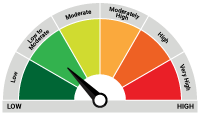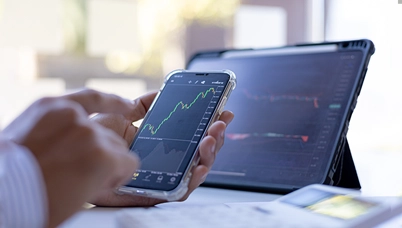Debt monthly view for July 2022
Posted On Wednesday, Aug 10, 2022
After 8 months of relentless rise, bond yields came down in July owing to a sharp fall in the global commodities prices and the US treasury yields.
Weakening economic activity across advanced economies and an expectation of recession in the US and Europe triggered a sharp decline in commodity prices. It also fueled an expectation that the US federal reserve would not be able to hike interest rates too much from here.
This, in turn, led to a steep fall in the US treasury yields. The 10-year US treasury yield fell by 36 basis points in the month from 3.01% to 2.65%. While the brent crude oil price fell by 5.4% from USD 114.8/barrel to USD 110/barrel. The crude oil price fell further in the first week of August to ~USD 95/barrel on August 5, 2022.
Indian bond market followed the global cues. The 10-year Indian government bond yield fell by 13 basis points from 7.45% on June 30, 2022, to 7.32% on July 31, 2022. It dipped further to an intraday low of 7.10% on August 5, 2022, before the announcement of the RBI’s monetary policy.
The monetary policy committee (MPC) of the RBI hiked the policy repo rate by 50 basis points from 4.90% to 5.40%. The 50-basis points rate hike was more or less in the market’s thinking. But there was an expectation that the rate hiking cycle is coming close to its end and the RBI will be relatively dovish in its statement.
The RBI’s policy statement was fairly hawkish. At 5.4%, the repo rate is already above its pre-pandemic level. Yet, the RBI has maintained its policy stance as ‘withdrawal of accommodation’. This suggests that the neutral level of the repo rate is at or above 6% from where the last rate cutting cycle had started. So, the rate hiking cycle is not over yet.
The RBI also seemed concerned about the external sector and its impact on the Indian Rupee. The worry on the external sector is three folds – the current account deficit has widened to uncomfortably high levels of more than 3% of GDP, capital inflows have fallen, and the foreign exchange reserves are dwindling fast.
Rate hikes and quantitative tightening in the US and other advanced economies remain a big risk for capital flows in the emerging markets. Thus, the RBI’s concerns are justified and it would keep the risk of repo rate going significantly above 6% alive.
The bond market sold off after the policy announcement with yields moving higher by 15-20 basis points from the pre-policy lows. The 10-year G-sec yield moved up from the pre-policy bottom of 7.10% to end the day at 7.30% on August 5, 2022.
Given the bond yields have come down significantly over the last month, there is a possibility of a further rise in the yields in near future.
However, from a medium-term perspective, another 50-60 basis points of a rate hike by the RBI is already in the market’s thinking. Thus, bond yields may not move up significantly from current levels. We expect the 10-year G-sec yield to find support at around 7.5%.
In the shorter end, the yield on up to 1-year debt securities would continue to move higher due to a potential increase in the policy repo rate and a reduction in the liquidity surplus in the second half of the year.
Based on our assessment that much of the rate hikes are already priced in the medium to long duration bonds, we suggest investors with 2-3 years holding period should consider adding their allocation to dynamic bond funds to benefit from higher yields on medium to long term bonds.
Dynamic bond funds have the flexibility to change the portfolio positioning as per the evolving market conditions. This makes dynamic bond funds better suited for long-term investors in this volatile macro environment.
Investors with a shorter investment horizon and low-risk appetite should stick with liquid funds. With the increase in short-term interest rates, we should expect further improvement in potential returns from investments in liquid going forward.
Since the interest rate on bank saving accounts are not likely to increase quickly while the returns from the liquid fund are already seeing an increase, investing in liquid funds looks more attractive for your surplus funds.
Investors with a short-term investment horizon and with little desire to take risks should invest in liquid funds which own government securities and do not invest in private sector companies which carry lower liquidity and higher risk of capital loss in case of default.
Source: RBI
| Name of the Scheme | This product is suitable for investors who are seeking* | Riskometer |
| Quantum Dynamic Bond Fund An Open-ended Dynamic Debt Scheme Investing Across Duration. A relatively high interest rate risk and relatively low credit risk. | • Regular income over short to medium term and capital appreciation • Investment in Debt / Money Market Instruments / Government Securities |  Investors understand that their principal will be at Low to Moderate Risk |
The Risk Level of the Scheme in the Risk O Meter is based on the portfolio of the scheme as on July 31, 2022.
| Potential Risk Class Matrix – Quantum Dynamic Bond Fund | |||
| Credit Risk → | Relatively Low | Moderate (Class B) | Relatively High (Class C) |
| Interest Rate Risk↓ | |||
| Relatively Low (Class I) | |||
| Moderate (Class II) | |||
| Relatively High (Class III) | A-III | ||
Disclaimer, Statutory Details & Risk Factors:The views expressed here in this article / video are for general information and reading purpose only and do not constitute any guidelines and recommendations on any course of action to be followed by the reader. Quantum AMC / Quantum Mutual Fund is not guaranteeing / offering / communicating any indicative yield on investments made in the scheme(s). The views are not meant to serve as a professional guide / investment advice / intended to be an offer or solicitation for the purchase or sale of any financial product or instrument or mutual fund units for the reader. The article has been prepared on the basis of publicly available information, internally developed data and other sources believed to be reliable. Whilst no action has been solicited based upon the information provided herein, due care has been taken to ensure that the facts are accurate and views given are fair and reasonable as on date. Readers of this article should rely on information/data arising out of their own investigations and advised to seek independent professional advice and arrive at an informed decision before making any investments. Mutual fund investments are subject to market risks read all scheme related documents carefully.Please visit – www.QuantumAMC.com to read scheme specific risk factors. Investors in the Scheme(s) are not being offered a guaranteed or assured rate of return and there can be no assurance that the schemes objective will be achieved and the NAV of the scheme(s) may go up and down depending upon the factors and forces affecting securities market. Investment in mutual fund units involves investment risk such as trading volumes, settlement risk, liquidity risk, default risk including possible loss of capital. Past performance of the sponsor / AMC / Mutual Fund does not indicate the future performance of the Scheme(s). Statutory Details: Quantum Mutual Fund (the Fund) has been constituted as a Trust under the Indian Trusts Act, 1882. Sponsor: Quantum Advisors Private Limited. (liability of Sponsor limited to Rs. 1,00,000/-) Trustee: Quantum Trustee Company Private Limited. Investment Manager: Quantum Asset Management Company Private Limited. The Sponsor, Trustee and Investment Manager are incorporated under the Companies Act, 1956. |
Related Posts
-

Debt Monthly for December 2025
Posted On Tuesday, Dec 02, 2025
As we approach the end of the calendar year, we find ourselves at a pivotal moment, with the market split on the likelihood of an upcoming rate cut.
Read More -

Debt Monthly for November 2025
Posted On Tuesday, Nov 04, 2025
October 2025 in a Nutshell: Monetary Policy and Demand–Supply
Read More -

Debt Monthly for October 2025
Posted On Friday, Oct 03, 2025
September was a pivotal month for fixed income markets, both globally and domestically.
Read More



